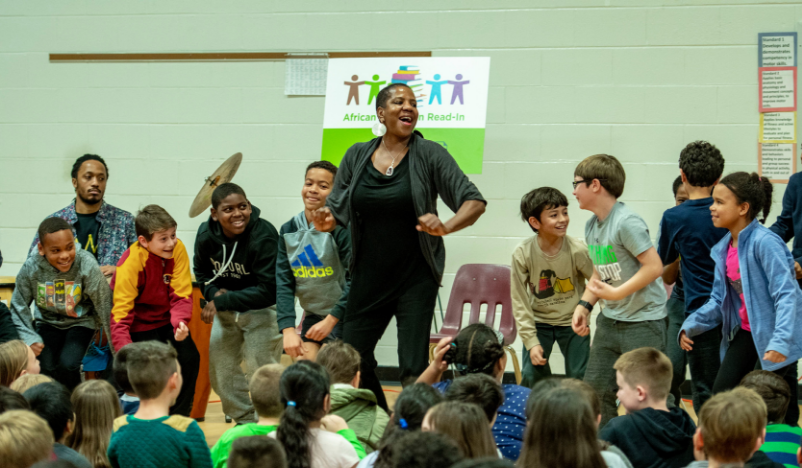The following post was written by NCTE member Dr. Tiffany A. Flowers.
“People do not just ‘happen’ in history. They come along at a certain time, and in a certain place. They react to ideas that have come before them, and to people who have expressed those ideas.” – Walter Dean Myers, Malcolm X: By Any Means Necessary
The quote above is powerful and it illuminates everything that the African American Read-In initiative is about. This national program is intended to raise awareness of the work of African American authors and build demand for their books. People who participate in a Read-In leave wanting to learn more. The Read-In toolkit makes it easy for even the most novice parent, teacher, or student to get involved.
Many organizers such as myself know that finding good books by African American authors to read all month long is never a challenge. Narrowing down our choices from 150 or more is another story. How can we read all of these books in just 29 days? The answer is that we cannot, and that is why we advocate kicking off the Read-In by February and continuing to read those books all year long. Why not have a summer reading program with African American books? What about a book lock-in where kids read their favorite African American books and enjoy snacks together? What about using the African American books during read-aloud or during literature circle choices? The possibilities are definitely endless.
Participating in the Read-In has inspired me to consider lots of big questions about how to focus my reading experiences with students and how to foster a curiosity in them that fuels their desire to keep seeking these books out. Here are just a few of the questions I’ve explored:
- How can I make fostering a comprehensive and diverse curriculum a yearlong affair?
- Do we begin with discussing dissenting views of the Civil Rights Movement and read about King’s Legacy and Malcolm X’s legacy?
- Do we discuss entertainers who helped to break down barriers and achieve a monumental legacy such as Marian Anderson, Bessie Smith, Duke Ellington?
- Should we integrate curricular extensions and talk about segregation and what life was like? Stories such as Uncle Jed’s Barbershop and Richard Wright and the Library Card can speak to those experiences.
- What books explore what life was like in the North versus South under segregation?
- Should we begin with stories from Africa like the Anansi Tales and weave in storytelling and retelling activities?
- What books might lead to deep discussions on the issues surrounding slavery, Emancipation, the abolitionist movement, and Reconstruction?
There are so many avenues and ways to do the African American Read-In that book selections can become the toughest challenge. However, I see this as an opportunity to share some of the best books with children.
Readers will discover experiences through African American authors that give them hope, warm their hearts, drive their need for justice, affirm their beauty, and teach history. The goal of this national program is that once people discover the wealth these authors have to offer, they will create demand for these books all year long.

Dr. Tiffany A. Flowers is an assistant professor in the Department of Cultural and Behavioral Sciences at Perimeter College at Georgia State University. You can contact her at tflowers@gsu.edu.

